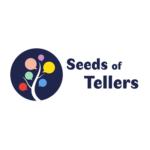“The way to read a fairy tale is to throw yourself in.”
― W.H. Auden
In previous articles, we talked about the project in general, its aims, the importance of tales and of the concept of inclusion through tales. Basically, we have talked a lot about the “Why?”, a little bit about the “What?”, but not so much about the “How?”.
How does a storytelling session unfold in practical terms?
Storytelling time is a very special moment. When most people would say it is easy to tell a story, professional storytellers and people who really tried their hand at it will probably tell you that it is more complex than it looks. Telling a story requires imagination, good communication and mastery of narrative mechanisms. It is a talent cultivated by storytellers and considered as a very serious skill.
In this project, the storytelling time is a moment during school hours when pupils gather in a circle or a specifically allotted space devoted to storytelling. At first, the teacher will be the one to tell stories. Listening to these stories will help sensitize pupils to the usual structures and mechanisms of tales, as well as the structure of a narrative. With repetition, they will even begin to remember the tales.
Little by little, the teacher will then invite the pupils to tell their own stories, encouraging them to speak in front of the others, using different fun exercises.
Pupils will then tell the stories in their own words and boost their self-confidence in public speaking.
Free to try
The trick with storytelling at school, with an ultimate pedagogical objective, is to keep this moment free of academic performance pressures. The benefits of storytelling will be felt as trickle-down effect in other academic works but should not be evaluated directly. Here, storytelling will not be an exact science. The interest of telling stories is that reinterpretation from the pupils is possible, and even encouraged. This creates a safe space of oracy where the pupils can experiment with speaking in public, without the pressure of performing for points. This also creates a sense of belonging in a group and promotes oral tradition in the young generation.
The idea is to make the pupils talk with a purpose in a specific context. They will thus use specific vocabulary and grammar mechanisms that are typical of a story narrative.
A basic storytelling session
A storytelling session usually takes place in a specific space in the classroom, that helps the pupils make a mental separation between class time and storytelling time.
It can be a corner of the classroom with cushions to sit on, a space to sit in a circle without tables, in the library or any other place.
The teacher will then start the storytelling session. To further create a specific “moment”, they can begin the tale with a ritual phrase. One of the most famous ones is “Once upon a time”.
Those small phrases are a sign that the pupils just entered “story land” where anything can happen. This is the beginning of a different mindset for the duration of the story. By doing this, the storyteller subconsciously signals to his audience that we are switching to the world of the tale that has different codes and different rules. Over time, pupils learn these codes and will be able to use them in turn when telling stories. Most of them are useful narrative skills that can be transposed into different fields later in life.
At the end of a story, the teacher can use a closing ritual phrase, indicating that we are getting out of “story land”, such as the very famous “and they lived happily ever after, the end.”
How do we tell stories?
The process of successful storytelling can end up being pretty complex and has a lot of unsuspected aspects. Ultimately, this project attempts to give as many tools and techniques to teachers and people who want to promote oracy through storytelling as possible, to tell tales in a fun and innovative way. This is all done to stimulate young pupils to speak up, in a constructed, and creative way. We help building their voices by building their dreams first.
Source: 1 image by License Freepik link

Visit the project website : http://www.seedsoftellers.eu/![]() Follow the project on Facebook: Seeds of Tellers & Twitter : @SeedsofTellers
Follow the project on Facebook: Seeds of Tellers & Twitter : @SeedsofTellers
#seedsoftellers #erasmusplusproject #educationforall #readanytimeanywhere
In collaboration with: La Grande Oreille, Les Apprimeurs, Grimm Sisters, Agrupamento de Escolas Pinheiro e Rosa, High School Lyuben Karavelov

